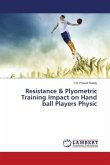In sports the most important aspect is to improve performance and thus be successful. Nowadays there exist almost equal levels of performance in high elite sports. In this book a new approach - instead of doping - for performance improvement with the whole scientific background is outlined and set into coherence to high elite sports and the there expected effects of such a training; the Coordinationdynamical Resistance and Endurance Training (CRET). This approach is based on electrophysiological measurements on the open spinal cord of a brain-dead person during surgery combind with electromyography (EMG). With two platin electrode pairs (distance 10 cm) on the spinal cord and EMG on the muscles while pin pricking the skin and pulling the catheters to provoke contractions of the sphincter muscles, a ground sctructure of work and organization of the human central nervous system (CNS) could be observed. So afferences (muscle spindle and skin) and efferences are firing rhythmically coordinated with frequences of up to 5 milliseconds (ms). Further it shows that the CNS - origin of performance - can be optimized through rhythmic coordinated afferent input. The book emphazises the importance of such a training to gain more performance improvement in sports. Finally a design for evaluating effects and an example how this exact coordinated rhythmic input can be achieved is given.








